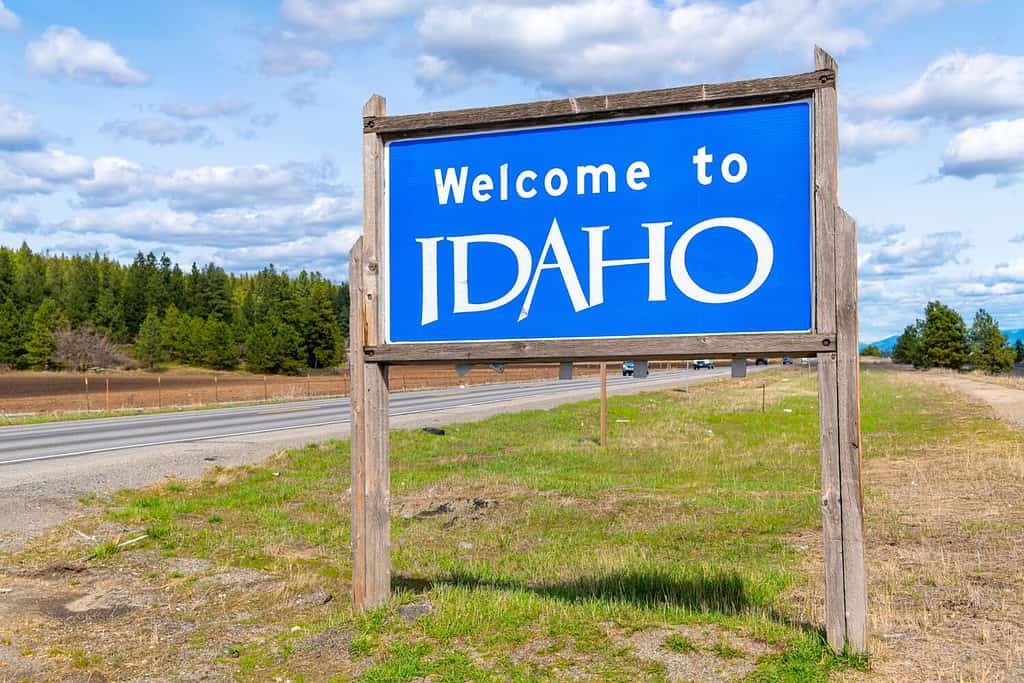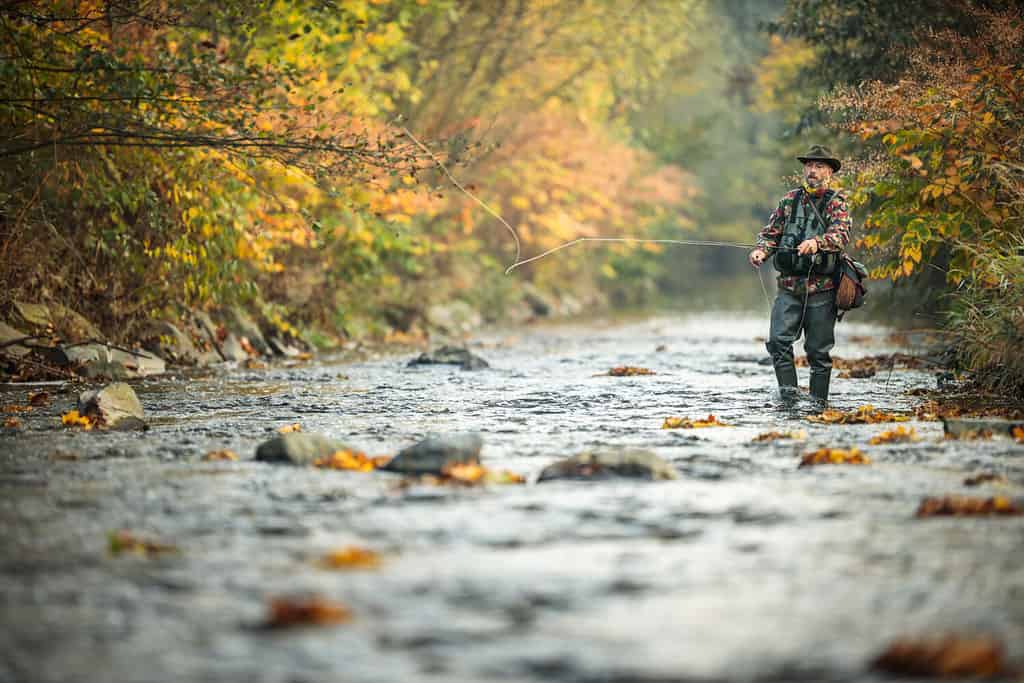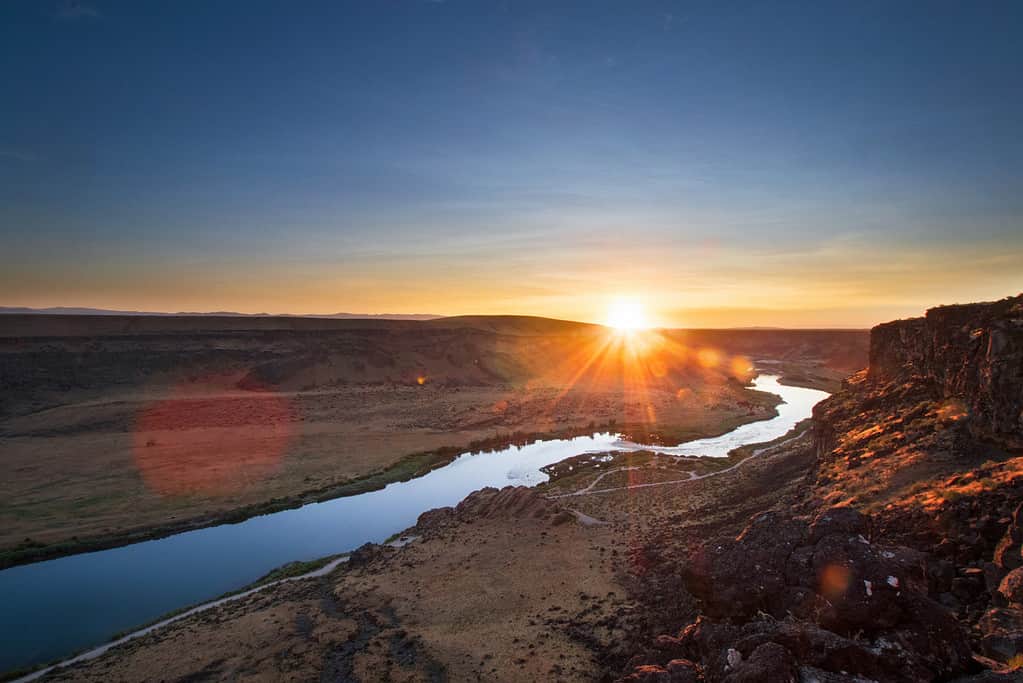
Idaho is famous for its stunning natural landscapes.
©Kirk Fisher/Shutterstock.com
Idaho is located in the northwestern region of the United States. People know Idaho for its diverse landscapes, outdoor recreational opportunities, and rich natural resources.
People often refer to it as the “Gem State” because of the abundance of rare minerals found there. It is home to the Rocky Mountains, including the Sawtooth Range, as well as lush forests, pristine lakes, and meandering rivers. Notable natural attractions include Shoshone Falls, often called the “Niagara of the West,” and the picturesque Lake Coeur d’Alene. The smallest town in Idaho is as beautiful as the rest of the state.
Idaho has a lot of small towns with very small populations. Some people choose to live in small towns because of the sense of community and cultural identity they offer. These towns often have unique local traditions and a strong community spirit that attracts residents who value these qualities. By just how small many towns in Idaho are, people debate the sizes of many of these towns.
However, one thing is for certain – the smallest town in Idaho, by population, is Warm River. It has a current population estimate of one. That’s right: just one person was officially living in Warm River, Idaho, in the 2021 United States Census.
Why Is the Population in Warm River So Small?

A waterfall on the Henrys Fork in the Caribou-Targhee National Forest.
©Gerald Corsi/iStock via Getty Images
Idaho has a relatively high number of small towns and low-population areas for several reasons. Interestingly, Idaho is the 14th largest state in the United States by land area. Its vast and diverse geography includes rugged mountain ranges, extensive forests, and fertile valleys. This geographic diversity has contributed to the development of numerous small, isolated communities, especially in remote areas where the population is naturally limited.
Much of Idaho’s land is rural and sparsely populated. The state’s economy has traditionally been tied to agriculture, mining, forestry, and outdoor recreation, all of which often require a low population density. For example, large tracts of land are needed for farming, ranching, and timber harvesting. In some regions of Idaho, limited economic opportunities can discourage population growth. When an area lacks job prospects and services, people may be less likely to settle there, leading to a naturally lower population. It is also important to note that Idaho places a strong emphasis on preserving its natural beauty and protecting the environment. This has led to the establishment of numerous protected areas, parks, and wilderness regions. Many of these are in remote or low-population areas to minimize human impact.
Population Decline in Warm River
Warm River was not always a town of one, but it was always a small town. In 2000, 10 people lived there in three separate households. The three families resided in the smallest town in Idaho. All of the people living there were white. None of the families had children under the age of 18 living with them. The median income for these households was about $51,250. Men had a median income of $8,750 while women had a median income of $0. However, none of the people in Warm River were living below the poverty line.
By 2010, only three people were living in Warm River. They lived across two separate households. Still, 100% of the town’s residents were white. One of those three people lived alone and the other two lived together. The median age between these three people was 56.5 years old. Two of the residents were women and one was a man.
So why is the population in Warm River so small? The answer is simple. It’s probably because of the physical size of the town. The town has a total area of 0.73 square miles. Of that, 0.75 square miles is land and 0.01 square miles is water. The town is simply not big enough for that many people to live in it! Since the smallest town in Idaho is so small, visitors usually need to find lodging, restaurants, and stores in nearby towns such as Island Park or Ashton.
What Is Warm River Known for?

Warm River is a hot spot for fly fishing.
©l i g h t p o e t/Shutterstock.com
Warm River is famous for its stunning natural beauty and outdoor recreational opportunities. Beautiful landscapes surround the smallest town in Idaho. There are a couple of different waterways crossing through the smallest town in Idaho, including Warm River, which is what the town is named after. The Warm River itself flows through the area. The river’s clear, cool waters wind their way through a lush forested environment, making it a picturesque location for outdoor enthusiasts and nature lovers.
Robinson Creek also passes through the town. However, the two waterways do not intersect inside of Warm River, the town. They converge just outside of town limits.
The tributary river, Henrys Fork, passes just outside of Warm River. It is a 127-mile river that borders the town of Warm River.
Warm River is a hot spot for fly fishing. Warm River provides fly fishers with brook trout (Salvelinus fontinalis), rainbow trout (Oncorhynchus mykiss), cutthroat trout (Oncorhynchus clarkii), and white fish. Henry’s Fork of the Snake River is renowned for its world-class fly fishing. Also, people like to go birdwatching in Warm River.
People like to use the Warm River for water activities like floating and tubing. Families also love to visit Warm River Campground, located partly within town limits. Its beauty attracts visitors throughout the summer months.
Where Is Warm River Located On a Map?
The smallest town in Idaho is located in Fremont County in the Island Park region. It is in the eastern part of the state, just outside of the Caribou-Targhee National Forest. Idaho and Wyoming share the Caribou-Targhee National Forest. And Warm River is close to the border of Wyoming. The Teton Mountain Range, which is also shared between Idaho and Wyoming, is visible from the Warm River. Harriman State Park, which is known for its abundant wildlife and scenic beauty, is a short drive away. It offers hiking, wildlife viewing, and skiing in the winter.
Warm River experiences distinct seasons. Winters can be cold and snowy, making it a great destination for snowmobiling, cross-country skiing, and other winter sports. Summers are mild and offer excellent conditions for fishing, camping, hiking, and other outdoor activities.
Warm River, Idaho, is a hidden gem for those who appreciate natural beauty, outdoor activities, and a quieter, more secluded escape. It is particularly appealing to individuals looking to enjoy the great outdoors and the serenity of the Idaho wilderness. The beauty is simply endless in Warm River.
History of Warm River

Beautiful sunset over the Snake River in Idaho.
©graphicphoto/iStock via Getty Images
The smallest town in Idaho was incorporated in the 1940s to bring the small resort community in compliance with state law that restricted liquor licenses to only incorporated municipalities. Over the last two decades, its population has shrunk by almost 100%.
Warm River is located near Island Park, a larger region known for its pristine wilderness and vast forests. Island Park is a popular gateway to Yellowstone National Park, and many visitors pass through Warm River on their way to explore the iconic park’s wonders.
Wildlife in Warm River

A bull moose in the Snake River in Wyoming.
©twildlife/ via Getty Images
As detailed above, some of the most common wildlife found in Warm River are its fish species. But you can spot a variety of animals in Warm River. Popular birds there include the common redpoll (Acanthis flammea), Cooper’s hawk (Accipiter cooperii), northern goshawk (Accipiter gentilis), sharp-shinned hawk (Accipiter striatus), long-eared owl (Asio otus), American goldfinch (Spinus tristis), Sabine’s gull (Xema sabini), and many more. All kinds of frogs are common, as are many insects. You could see a mountain goat (Oreamnos americanus), moose (Alces alces), American black bear (Ursus americanus), Rocky Mountain bighorn sheep (Ovis canadensis canadensis), or a feral horse (Equus caballus).
It is common to see moose, wolves, and bears in this area. Experts recommend, that if you are going to visit Warm River, you should first learn bear safety tips.
The photo featured at the top of this post is © Kirk Fisher/Shutterstock.com
Thank you for reading! Have some feedback for us? Contact the AZ Animals editorial team.






